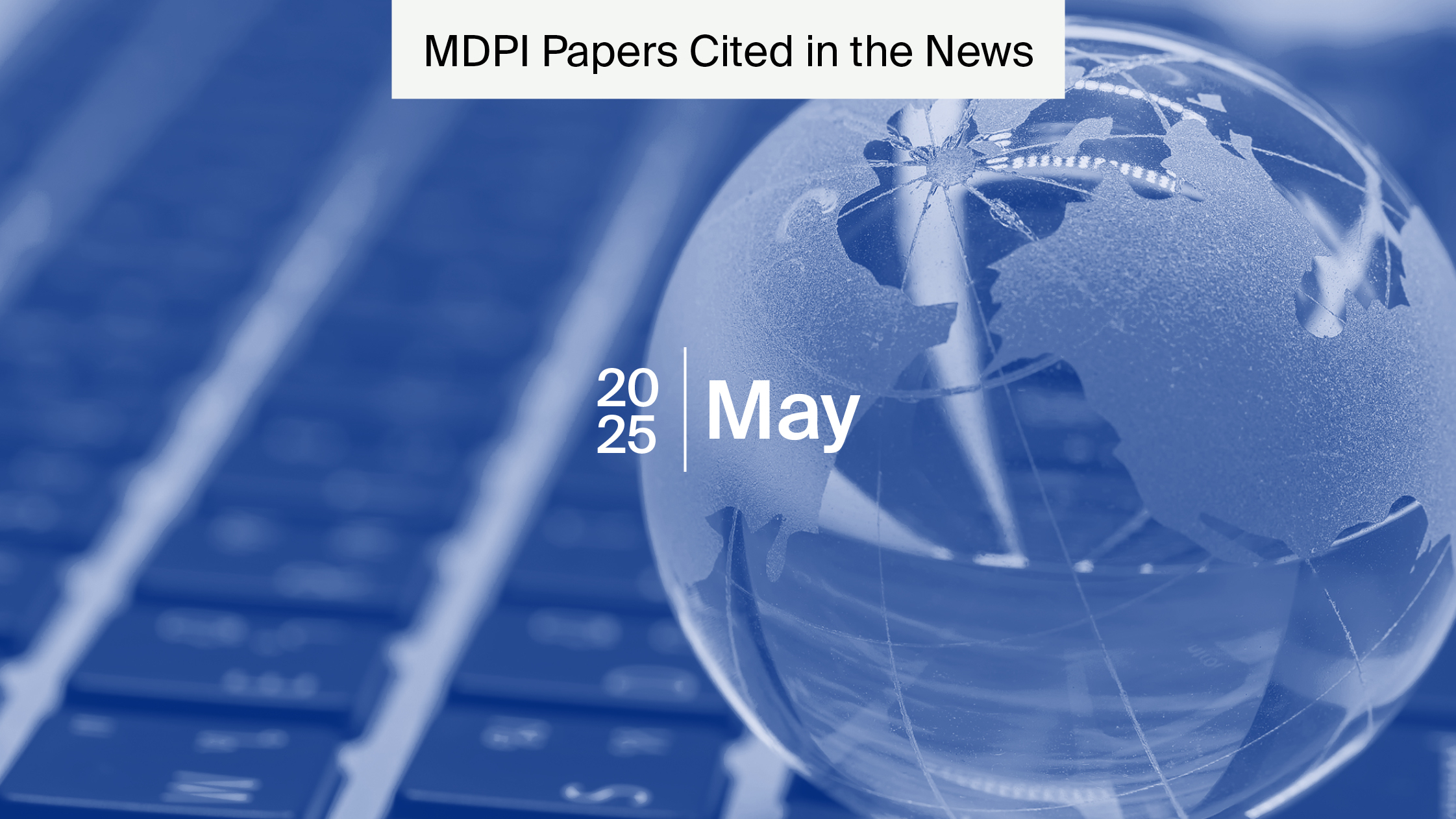
Using Fungi for Waste Management
Global environmental pollution is worsening due to increasing urbanisation and industrialisation. We need sustainable solutions. And fungi could be one. Using fungi for waste management presents an exciting opportunity to deal with waste in an eco-friendly and low-cost manner.
Being rooted in sustainability, MDPI is committed to publishing cutting-edge research on topics that can help us solve environmental challenges. Here, we delve into research by leading scientists that explore sustainable waste management using fungi.
What are fungi?
Fungi aren’t plants. They are a separate group of spore-producing organisms. Whilst plants absorb light and carbon dioxide to produce energy, fungi consume organic matter by releasing enzymes onto the surfaces they grow on. An example of this is when you see a fruit rotting. The infected parts soften due to the enzymes so the fungus can consume it.
Mushrooms are the most recognisable fungi, but fungi come in many forms (with 144,000 known species). These include yeast, mildews, and moulds. In the typical fungus, there is a mass of branched, tubular filaments called hyphae. These branch into complicated, expanding networks called the mycelium, which is what uses nutrients from the environment.
The mass of loose, thread-like filaments that make up the mycelium expand and consume matter. Fungi often grow in association with plants, such as on trees, and play a key role in helping to recycle nutrients and break down dead plant materials. Naturally, we see fungi demonstrating sustainable waste management. And this is where the concept of mycoremediation comes in.
What is mycoremediation?
The term mycoremediation combines ‘myco-’, which refers to fungi, and ‘remediate’, which refers to restoring by reversing or stopping environmental damage. Simply, mycoremediation is a form of remediation that employs fungi to degrade, restore, and heal contaminated ecosystems.
This can be applied to sustainable waste management as the fungi can be used to break down compounds that prevent material from being degradable or recyclable. These include heavy metals, pharmaceuticals, pesticides, and much more. And fungi can be used to remediate water too.
Why use fungi for waste management?
Compared to other methods of restoring material or water, mycoremediation is cost-effective, eco-friendly, and long-lasting. Moreover, it presents a few unique benefits:
- Reduced waste transportation: it can be performed on site in landfills or water.
- Removes/reduces the need for destructive treatment processes.
- Can be combined with other treatments for complex waste.
- A variety of residues and by-products can be recovered and then upgraded into higher-value products.
Fungi are tough, widespread, and cheap to grow. We’ve covered the other amazing things fungi can be used for, including fighting disease, treating depression, and creating sustainable material; see our article The Importance of Mushrooms if you want to learn more.
So, let’s look at the research on using fungi for waste management.
Textile waste is worsening
An article in the Journal of Fungi looks at using mycoremediation for textile waste. First, it outlines the colossal amount of textile waste being generated.
The fashion industry contributes greatly to waste. As the study highlights, the number of textile items produced globally has doubled in the last 15 years to more than 100 billion units. When discarded, 73% of the items are incinerated or sent to landfills. And, with 60% of clothing containing synthetic fibres, particularly elastane, these items are slow to or cannot degrade naturally.
Even biodegradable materials, like wool and cotton, can contain these synthetic additions, like zips or dyes, that make them no longer biodegradable. The result is the prolonged presence of synthetic materials in the environment or high-energy and high-emission incineration being necessary to dispose of waste.
Hence, the article looks at using fungi for waste management.
Textile mycoremediation
The study assesses the mycoremediation of textile-based dye and elastane for the sustainable disposal of textile waste. This works because mycelium, the network of filaments that consumes matter, can spread through the textiles.
This is the first study to demonstrate mycoremediation on textiles rather than in solution. The authors obtained fungal strains, textiles of various materials and dyes, and combined them in pots that were sealed.
Fungi can digest dye
After three months, the fungal strains grew across the textiles and one, Hypholoma fasciculare, markedly changed the colour of the garments. Interestingly, this fungus more easily digested the dye on the garments with 0% and 4% elastane versus those with 12% elastane. This continued after 8 months too, with significant decreases in the dye saturation, particularly in the lower-elastane garments, with up to 80% dye removed.
This suggests that, as the amount of elastane increases, the tested fungus struggled to break down the increased volume of synthetic materials. Fungi digests differently depending on the materials’ compositions and what type of fungus is used. Therefore, to mycoremediate most effectively, the waste’s composition must be considered carefully.
Circular economy
This article was a first in demonstrating the potential of using mycoremediation on textiles as a form of sustainable waste management. By removing dye, some items of clothing are more likely to biodegrade or even be recyclable.
Moreover, although the article doesn’t address it, mycoremediation could be factored into the design of clothing for a circular economy approach. This involves preventing products from having an ‘end’ in their life cycle.
Garments could potentially be designed with mycoremediation in mind. Their unique qualities could be removed sustainably using fungi so the material can be repurposed into new items. This would create a circular economy of clothing items to reduce waste and the need for disposal.
Addressing heavy metal contamination
An article in Microorganisms looks at using fungi to remediate coastal marine sediments that are contaminated with heavy metals.
This is the first time in researching remediation that marine-derived fungi have been used for removing heavy metals. To do so, the authors conducted parallel laboratory experiments using different combinations of treatments to compare their effectiveness.
Heavy metal contamination is widespread, particularly in coastal areas subject to industrial practices. High concentrations of heavy metals can accumulate and be transferred up the food chain into humans. When consumed in higher amounts, heavy metals can become toxic or dangerous, affecting the function of the brain, lungs, kidneys, and other important organs. They are not biodegradable and thus need to be managed.
Accordingly, the authors of the Microorganisms article gathered samples from the Mediterranean Sea and subjected them to various treatments.
Marine-derived mycoremediation
These treatments trigger bioleaching, which releases the heavy metals from the sediment. Fungi achieve this by releasing organic acids that increase the solubility of heavy metals, releasing them from the sediments.
Interestingly, bacteria alone had limited efficiency. And the addition of bacteria or chemicals to fungi only lowered their effectiveness. Fungi alone had significantly higher efficiency in bioleaching compared to chemical or bacterial treatments. Fungi treatments were eight times more effective than the chemical treatments and double the bacterial treatments.
This shows that marine-derived fungi can be applied in lowering heavy metal contamination in coastal areas in a more cost-effective and sustainable manner.
We need more research on mycoremediation
Fungi show great potential to be used as tools to sustainably cope with the massive amounts of waste being generated. Both highlighted articles represent the first time such studies have been performed. These early insights lay the foundation for the development of mycoremediation for sustainable waste management.
But we need more research to help test and implement fungi to reduce waste and pollution.
MDPI is committed to publishing cutting-edge research on sustainability. Moreover, we are committed to ensuring that research remains open and accessible by publishing Open Access. If you’re interested in submitting research on using fungi for waste management, why not consider submitting to Sustainability, Journal of Fungi, or Microorganisms? See our full list of journals for more.










